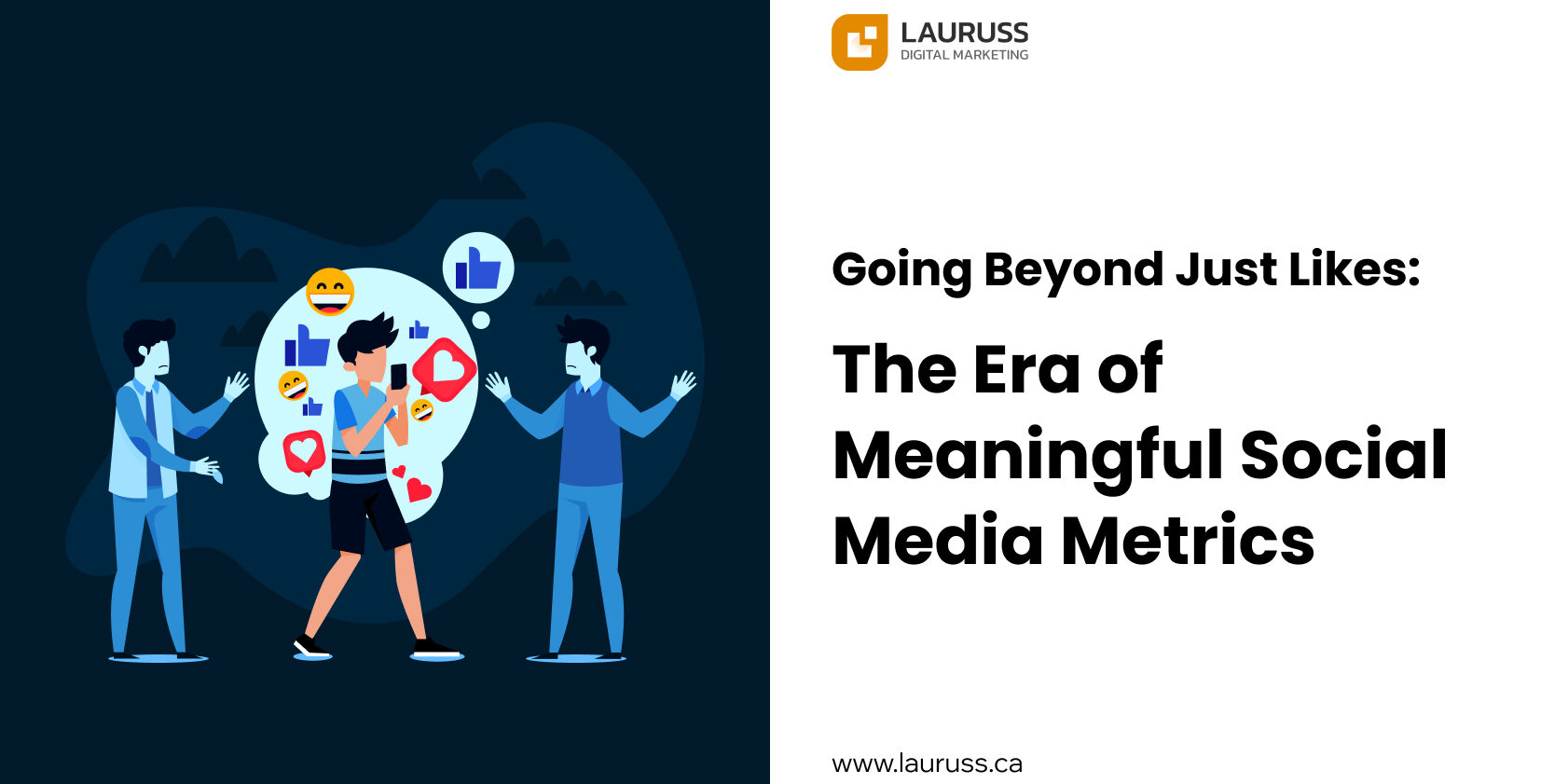Going Beyond Just Likes: The Era of Powerful Social Media Metrics
In the dynamic realm of social media, businesses and marketers have long fixated on the number of likes and followers as key measures of success. However, the era of meaningful social media metrics has arrived, requiring a shift in mindset.
Likes alone no longer provide a comprehensive understanding of the impact and success of your social media metrics efforts.
It’s time to dive deeper and embrace metrics that align with your business objectives and deliver tangible value.
In this blog post, we will explore the importance of going beyond just likes and uncovering the true power of meaningful social media metrics.
Let’s delve in!
🎯 Reach:
Casting a Wider Net While likes indicate audience engagement, reach measures the total number of unique individuals who have been exposed to your content. It goes beyond your immediate followers, giving you insights into the true extent of your social media metrics. By increasing your reach, you can expand brand awareness and attract new potential customers. For example, if a post goes viral and reaches thousands of users who aren’t following your account, it’s a clear indicator of successful reach.
Let’s say you’re a fitness influencer promoting your new workout program. By utilizing targeted hashtags, collaborating with other influencers, and sharing engaging content, you can increase your reach and capture the attention of fitness enthusiasts worldwide. This expanded reach opens up new opportunities for growing your audience and driving business outcomes.
🎯 Engagement Rate:
Building Connections Likes are just the tip of the iceberg when it comes to measuring engagement. By calculating the engagement rate, which considers metrics like comments, shares, and saves, you can gauge how effectively your content resonates with your audience. Higher engagement rates signify that your content is compelling and encourages people to take action, indicating a deeper connection between your brand and your followers.
Imagine you’re a cosmetics brand sharing a tutorial video on Instagram. If the video receives a substantial number of likes, comments filled with positive feedback, and shares from excited viewers, it indicates a high engagement rate. This demonstrates that your content has struck a chord with your audience, fostering a sense of community and loyalty around your brand.
🎯 Conversions:
Driving Business Objectives Likes alone won’t pay the bills. To truly measure the impact of your social media efforts, you need to track conversions. Conversions can vary based on your goals, whether it’s driving website traffic, generating leads, or making sales. By implementing conversion tracking tools and measuring metrics such as click-through rates, landing page visits, and purchases, you can directly link social media activities to tangible business outcomes.
For example, a fashion retailer launches a social media campaign offering an exclusive discount code. By tracking the number of coupon code redemptions and attributing them to social media channels, the brand can determine the conversion rate. This allows them to assess the effectiveness of their campaign in driving sales and optimizing their social media strategy for better results.
🎯 Sentiment Analysis:
Understanding Customer Perception Likes can be misleading when it comes to understanding customer sentiment. To gain a deeper understanding of how your audience perceives your brand, sentiment analysis plays a vital role. By analyzing comments, mentions, and reviews, you can uncover valuable insights about your brand reputation, customer satisfaction, and areas for improvement. Sentiment analysis tools can categorize feedback as positive, negative, or neutral, allowing you to identify trends and sentiments associated with your brand.
For instance, suppose you’re a hospitality brand managing social media accounts. By monitoring sentiment analysis, you can quickly identify any negative sentiment surrounding your brand due to a specific incident. This enables you to address concerns promptly, demonstrate your commitment to customer satisfaction, and protect your brand’s reputation.
🎯 Return on Investment (ROI):
Demonstrating Value Likes might make you feel good, but to prove the value of your social media efforts to your stakeholders, ROI is a crucial metric. By analyzing your investment in social media advertising and comparing it to the resulting revenue or other business outcomes, you can determine the true return on your social media investment. This data-driven approach helps you justify your social media budget and optimize your strategy for better results.
Let’s consider a scenario where a software development company invests in targeted LinkedIn advertising to generate leads for their new product. By tracking the number of leads generated through social media campaigns and calculating the revenue generated from those leads, they can determine the ROI of their social media efforts. This empowers them to make informed decisions about allocating resources and optimizing their social media strategy to maximize returns.
In Conclusion:
In the ever-evolving landscape of social media marketing, it’s imperative to move beyond the superficial metrics of likes and followers.
Meaningful social media metrics provide a deeper understanding of your audience, the effectiveness of your content, and the impact of your campaigns on business outcomes. By focusing on metrics like reach, engagement rate, conversions, sentiment analysis, and ROI, you can unlock the true potential of social media marketing and drive your business forward.
So, embrace the era of meaningful social media metrics and harness their power to achieve tangible results in the digital realm.







